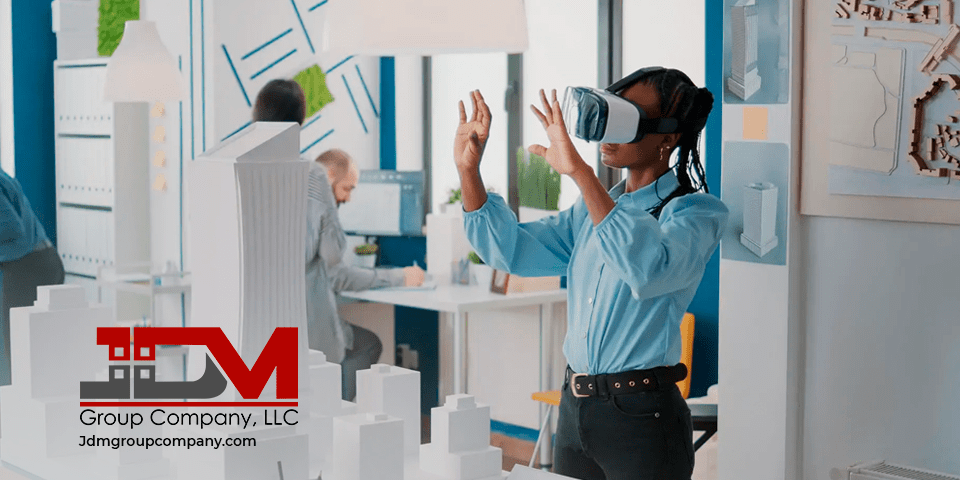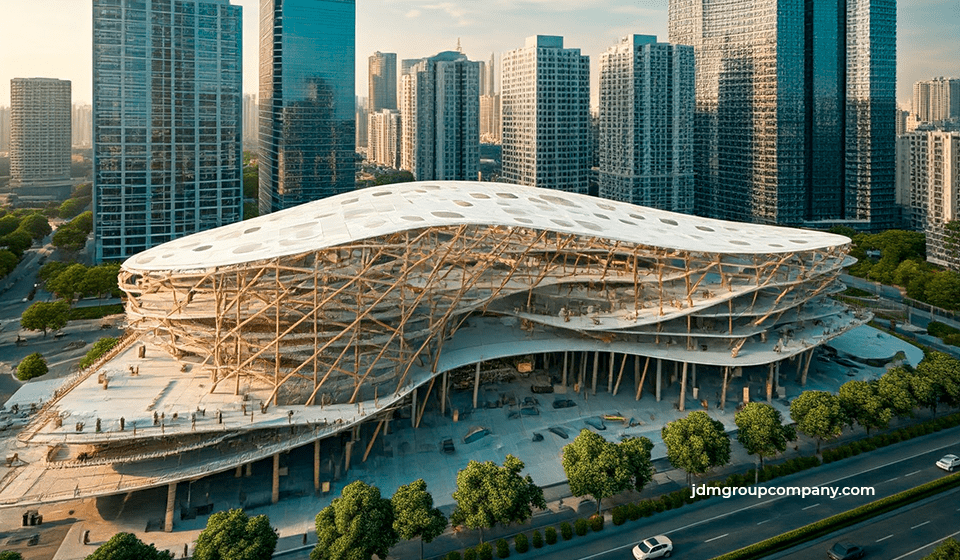Digitalization of Construction: BIM and Virtual Reality, a Revolution in Progress

Trends in Construction and Civil Engineering – 2024
July 15, 2024
Seismic Design of Structures: Building a Safer Future
August 19, 2024The construction industry, traditionally associated with manual methods and slow processes, is undergoing an unprecedented digital transformation. Two of the technologies leading this revolution are Building Information Modeling (BIM) and Virtual Reality (VR).
What is BIM?
BIM is a methodology that uses digital models to create a virtual representation of a construction project. This model contains all the relevant information of the project, from the geometry of the elements to their physical and functional properties. BIM allows construction professionals to collaborate more efficiently, detect design conflicts at early stages, and optimize project management.
What is Virtual Reality?
Virtual reality is a technology that creates a simulated environment in which users can interact with objects and spaces in an immersive way. By combining BIM with virtual reality, it is possible to create immersive experiences where users can explore a 3D construction model realistically.
Benefits of Combining BIM and Virtual Reality
The integration of BIM and virtual reality offers a number of significant advantages for the construction industry:
- Realistic visualization: Allows clients, architects, engineers, and contractors to visualize the project more realistically before construction, facilitating decision-making and reducing the possibility of errors.
- Early detection of conflicts: By detecting collisions and design problems in the BIM model, they can be solved more efficiently and economically before construction begins.
- Improved collaboration: Facilitates collaboration between the different actors in the project, allowing them to work on a common model and visualize changes in real time.
- Increased productivity: Optimizes design, construction, and project management processes, reducing time and costs.
- Improved safety: Allows simulating dangerous situations and developing more effective safety plans.
- Reduction of waste: By optimizing planning and project execution, less material waste is generated.
Practical Applications of BIM and Virtual Reality
- Design and planning: Creation of detailed 3D models, design analysis, and scenario simulation.
- Construction: Coordination of work, change management, quality control, and monitoring of construction progress.
- Maintenance: Asset management, maintenance planning, and visualization of facilities.
- Marketing and sales: Creation of immersive presentations to show clients projects in a more attractive way.
Challenges and Limitations
Despite its numerous benefits, the implementation of BIM and virtual reality in construction presents some challenges:
- Initial costs: The acquisition of specialized software and hardware can be expensive.
- Learning curve: Construction professionals need time to adapt to these new technologies.
- Interoperability: The lack of common standards can make it difficult to integrate different software and tools.
The Future of BIM and Virtual Reality in Construction
The future of BIM and virtual reality in construction is promising. These technologies are expected to continue evolving and become increasingly integrated into construction processes. Some future trends include:
- Artificial intelligence: AI will be used to analyze large amounts of data and optimize design and construction processes.
- Augmented reality: AR will allow overlaying digital information on the real world, facilitating visualization and interaction with BIM models.
- Digital twins: The creation of digital replicas of physical assets will allow monitoring their status in real time and predicting their behavior.
In conclusion, BIM and virtual reality are radically transforming the construction industry, offering new opportunities to improve the efficiency, quality, and sustainability of projects. As these technologies continue to evolve, they are expected to play an increasingly important role in the construction of the future.




